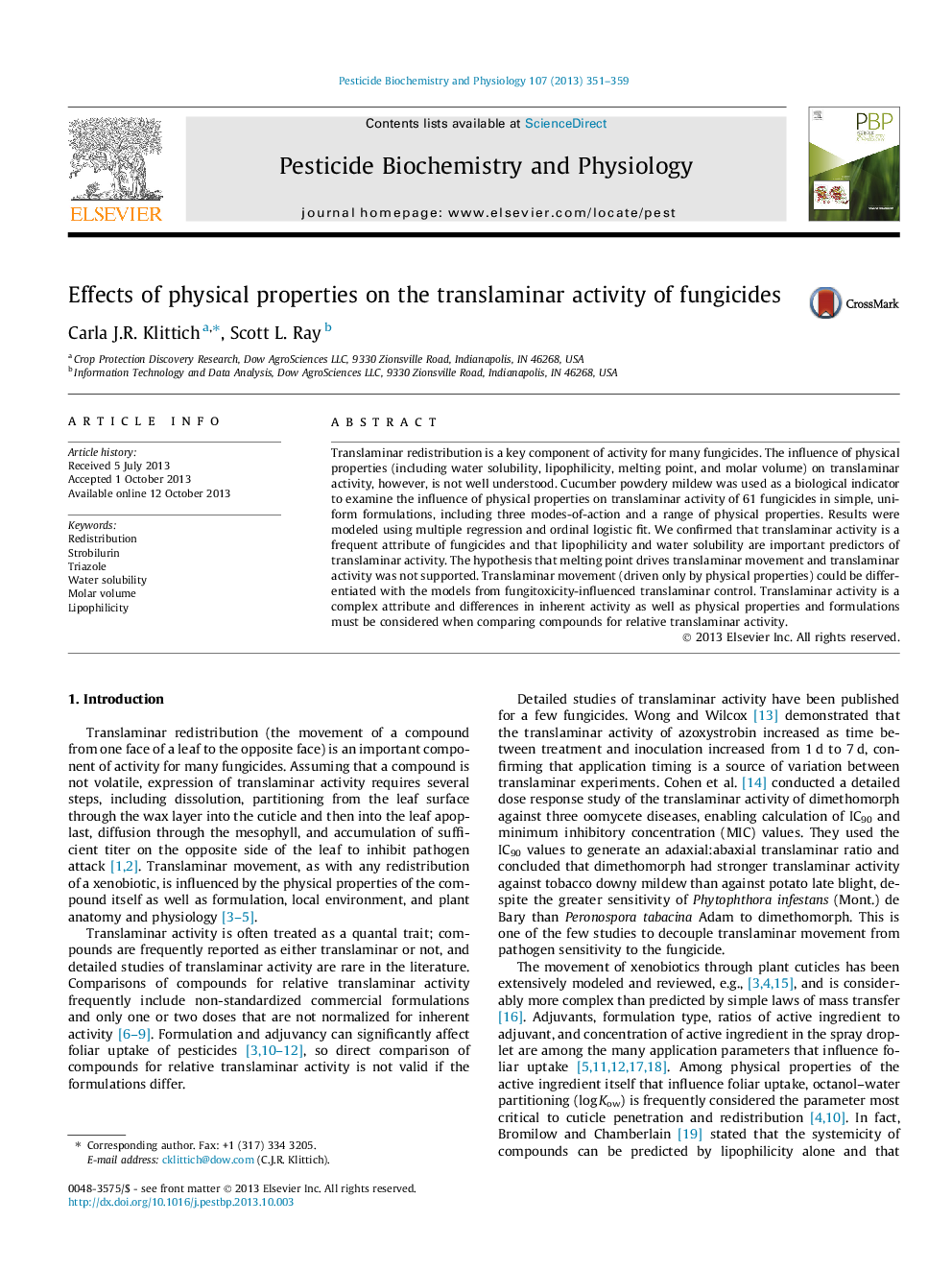| Article ID | Journal | Published Year | Pages | File Type |
|---|---|---|---|---|
| 2009337 | Pesticide Biochemistry and Physiology | 2013 | 9 Pages |
•Powdery mildew was used as an indicator to model physical property effects on translaminar activity.•61 compounds in uniform formulations were analyzed with regression and ordinal logistic fit models.•Translaminar redistribution was correlated with log Kow and water solubility but not with melting point.•Translaminar movement could be differentiated from fungicidal translaminar activity.•Inherent activity and formulation must be controlled when comparing translaminar compounds.
Translaminar redistribution is a key component of activity for many fungicides. The influence of physical properties (including water solubility, lipophilicity, melting point, and molar volume) on translaminar activity, however, is not well understood. Cucumber powdery mildew was used as a biological indicator to examine the influence of physical properties on translaminar activity of 61 fungicides in simple, uniform formulations, including three modes-of-action and a range of physical properties. Results were modeled using multiple regression and ordinal logistic fit. We confirmed that translaminar activity is a frequent attribute of fungicides and that lipophilicity and water solubility are important predictors of translaminar activity. The hypothesis that melting point drives translaminar movement and translaminar activity was not supported. Translaminar movement (driven only by physical properties) could be differentiated with the models from fungitoxicity-influenced translaminar control. Translaminar activity is a complex attribute and differences in inherent activity as well as physical properties and formulations must be considered when comparing compounds for relative translaminar activity.
Graphical abstractCucumber powdery mildew was used as a biological indicator to model translaminar redistribution of 61 fungicides.Figure optionsDownload full-size imageDownload as PowerPoint slide
